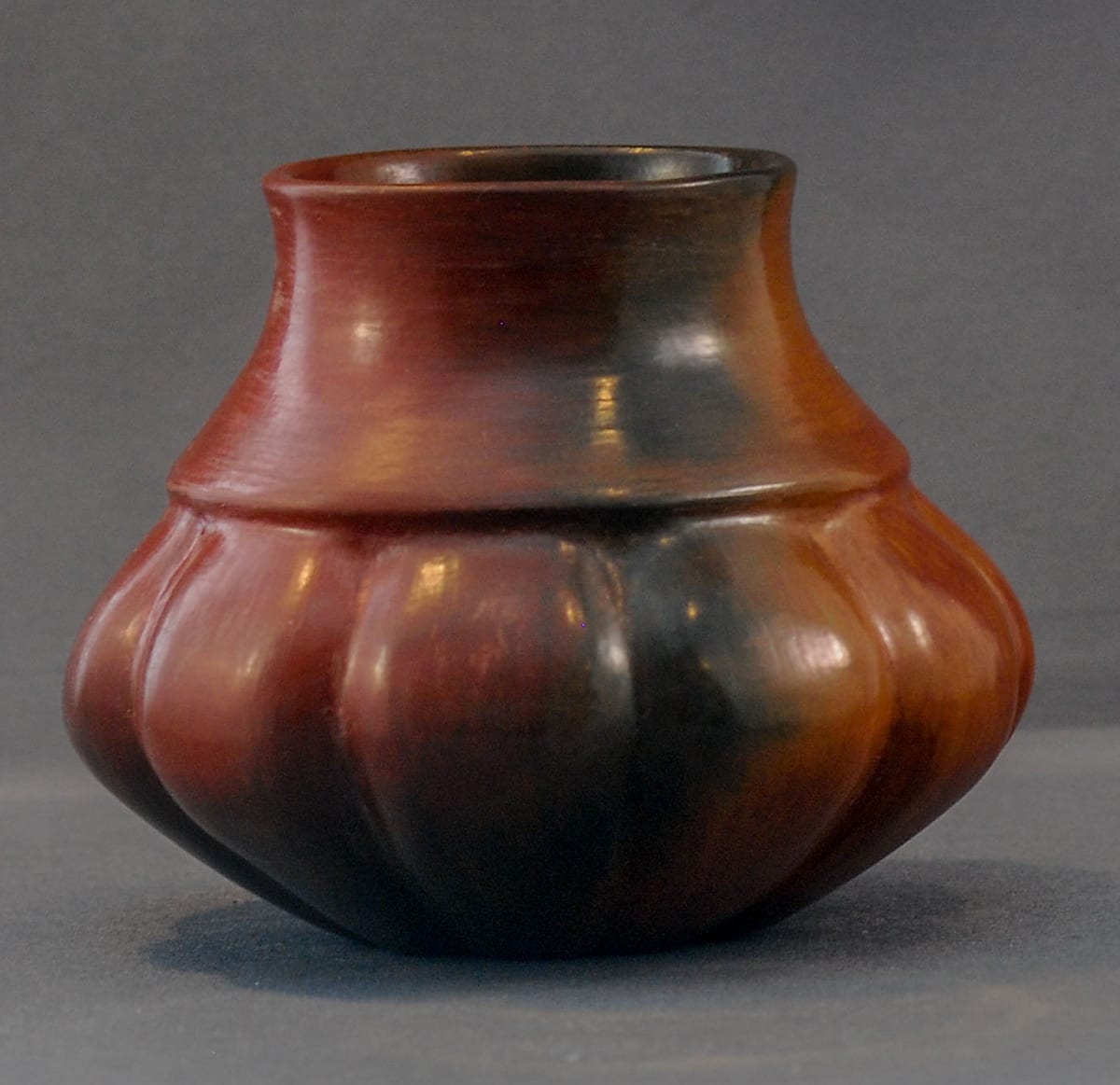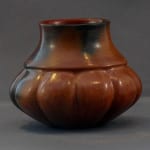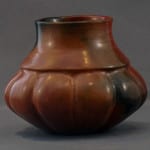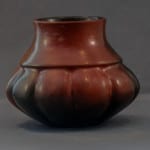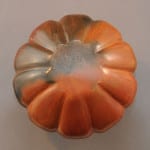This small jar is exceptionally thin for a Navajo pot. As with the Santa Clara/Hopi pot by Alton and Jeanne Komalestewa (2011-12), each of the ten lobes on this pot has been formed by pushing out the wet clay from inside, a difficult procedure. The inside of the neck and the exterior were then stone polished and the pot was fired in a dung fire, which gave it attractive dark fire blushes. The whole pot then seems to have been submerged in hot pinion sap, which sealed both the exterior and interior of the vessel and pooled on the bottom interior. While still warm, the surface of the pot was probably rubbed with a cloth or leather to give it a refined shine.
The shape is sophisticated: the smooth, crisply formed neck of the jar is concave while the lobed area is convex, which creates tension and motion in the form of the pot. There is no complex and intellectual painted iconography here, just a pure elegance of form and color that speaks directly to the eye.
Unlike most Southwest Native potters, Samuel was not taught pottery by a relative and began making pots relatively late in life at age 39. Thus, he is not included in standard texts on Navajo pottery (Hartman & Musial 1987), Navajo folk art (Rosenak 1994), or surveys of Southwest pottery (Hayes and Blom 1996).
Perhaps because he burst suddenly on the Southwest pottery scene and quickly won ribbons (including a blue ribbon at the March 2013 Hear Museum show) without there being a lot of published information about him, Jill Giller of Native American Collections in Denver, CO offers Samuel an extensive write-up:
“Samuel Manymules was born August 30, 1963 of the Bitterwater Clan for the Red Horse Nakai Dine Clan. He writes for us, ‘Unemployment is extremely high on the Navajo Nation. Through my adult life, I have been employed sporadically among many trades: I once made jewelry for the late Herbert Taylor, drove a tow truck for several years, and worked at an auto dealership. After dabbling in making pottery for over a decade, it is only very recently that I considered myself a potter, I am self-taught, At the moment, I consider myself more serious and engaged with my pottery.
The vessels I make are of traditional natural materials. First, I gather moist pure clay from local riverbed sources, which is then dried three to four months in the sun. When dried, the resulting clumps are crushed, ground and sifted into fine powder. Temper is also gathered and processed; volcanic ash, silt, or pottery shards may be used. After hand mixing, the clay is set aside for curing. Finally, after many months of preparation, the clay mixture is ready for use. Firing is an all-day process. Cedar wood is used because it burns efficiently and high temperatures. Fire clouds happen by chance. When finished, debris, such as ash, is carefully removed. Refined pinion tree sap is then swabbed inside and out with a stick while the vessel cools. After the vessel cools, the pottery is polished with a cotton cloth to a high sheen.’
Samuel has won numerous awards since 2002, including a recent Judges’ Choice Award at the 2008 Heard Museum and a Blue Ribbon at the 2009 Santa Fe Indian Market. He has been awarded Blue and red ribbons at both the Santa Fe Indian Market, the Heard Museum Market (in 2013), and in both 2005 and 2006 won Best of Pottery at the Southwest Museum Indian Marketplace. Samuel continues to work on his superb shapes and forms. His forms tend to be sophisticated and elegant. There is simplicity to his work that is so pleasing.”

